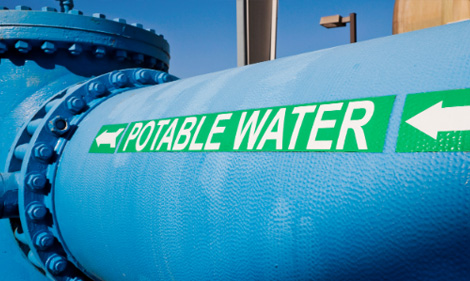

Wastewater Recycling Process

Water reclamation, wastewater reuse, or resource recovery is the process of converting treated wastewater into water that can be reused for other purposes. Reclaimed water is water that is used more than one time before it passes back into the natural water cycle. Reuse may include irrigation of gardens and agricultural fields, replenishing surface water, and recharging groundwater. Reused water may also be directed toward fulfilling domestic needs, businesses, and industry. This reuse water can even be treated to reach drinking water quality standards.
Wastewater Reuse Treatment
Advances in wastewater treatment technology allow communities to reuse water for many different purposes. The water is treated differently depending upon the source and use of the water and how it gets delivered. The terms “recycled water” or “reclaimed water” typically mean wastewater sent from a home or business through a sewer collection system to a wastewater treatment plant. At the plant, the water is treated to a level consistent with its intended use. A pump station distributes the reclaimed water to users around the city including golf courses, industrial facilities, and agricultural operations. Some distribution systems run a dual piping system to keep the recycled water separate from the potable water.
For many types of reuse applications, wastewater must pass through numerous sewage treatment process steps before it can be used. Steps might include screening, primary settling, biological treatment, secondary clarification, tertiary treatment, and disinfection. A combination of these technologies can meet strict treatment standards and make sure that the processed water is free from bacteria and viruses. Some of the typical treatment technologies include ozonation, aerobic treatment, reverse osmosis, and advanced oxidation. Wastewater is generally treated to only secondary level treatment when used for irrigation.
Reclaimed Water as Drinking Water
Some water agencies reuse highly treated effluent from municipal wastewater or resource recovery plants as a reliable, drought–proof source of drinking water. By using advanced purification processes, they produce water that meets all applicable drinking water standards. System reliability and frequent monitoring and testing are imperative to meeting stringent controls.
The water needs of a community, water sources, public health regulations, costs, and the types of water infrastructure in place, such as distribution systems, man-made reservoirs, or natural groundwater basins, determine if and how reclaimed water can be part of the drinking water supply. Some communities reuse water to replenish groundwater basins. Others put it into surface water reservoirs. In these instances, the reclaimed water is blended with other water supplies and/or sits in storage for a certain amount of time before it is drawn out and gets treated again at a water treatment or distribution system. In some communities, the reused water is put directly into pipelines that go to a water treatment plant or distribution system. Modern technologies such as reverse osmosis, ultraviolet disinfection, and chlorine are commonly used when reclaimed water will be mixed with the drinking water supply.
Toilet to tap is a term used to describe the above process. It is not quite a term of endearment, but is the reality of our water supply. Many wastewater treatment plants discharge into rivers upstream from drinking water plants. This happens in the Mississippi river today; the river is both the destination of sewage treatment plant effluent and the source of potable water. You may already be indirectly drinking reuse water and not even know it.
Risks and Rewards
Drawbacks or risks of reuse water include the contamination of potentially harmful substances such as bacteria, heavy metals, or organic pollutants. Irrigation with wastewater can have both positive and negative effects on soil and plants, depending on the composition of the wastewater and the soil or plant characteristics.
Reuse will continue to increase as the world’s population becomes increasingly urbanized and concentrated near coastlines, where local freshwater supplies are limited or are available only with large capital expenditure. Large quantities of freshwater can be saved by wastewater reuse and recycling, reducing environmental pollution and improving carbon footprint. It is vital that we consider these alternatives now so that we are better prepared for the future.